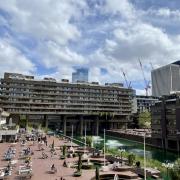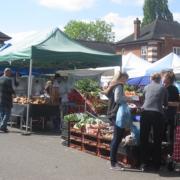
IS THIS LAW ACTUALLY HELPING?
The UK is warned to be facing the coldest October on record, as temperatures are thought to fall to -4 ℃. But what will happen to those that are sitting on the streets or have no place to go? 5,731 people are currently living homeless in Croydon. One sees a human sitting on a street in a coat, with a cup, a bowl, maybe a poster and calls them homeless. But no one stops to realise how someone actually got there. There are many reasons why or how a person becomes homeless. Presently, the end of a shorthold tenancy is the most common reason for homelessness. There has been a 78% increase in homelessness due to the end of a shorthold tenancy since 2011.
A shorthold tenancy is what you get if you decide to rent from a private landlord or a letting agent, with a contract that lasts for around 6 to 12 months. If your landlord decides to increase the rent, a one month notice must be given. Many that are homeless have been unable to pay this increase in rent, resulting in them not having a house to live in. However, the end of a tenancy is not the only reason why homelessness is increasing drastically among Britain, things such as employment, health and wellbeing play a big part in many people’s lives. Some people that have been involved and are facing problems with drugs and alcohol, could have a large impact on their lives with homelessness. Not all people that do face problems with drugs end up being homeless, but there is seen to be an increase in substance use across the homeless population. In fact, people that do use drugs are seven times more likely to become vagrant than someone who doesn’t. However, those living on the roads are mistaken to be the only people that are homeless.
Although rough sleeping is the most visible type of homelessness, there are many other types out there. Another form of homelessness is living in a temporary accommodation. At the end of 2017, an estimated 78,930 households were in temporary accommodation of which 60,000 consisted of dependent children. How long a family stays in temporary accommodation varies from just one day to as much as a couple of years. There are many different types of accommodations such as hostels, private and social housing as well as shelters. Being given a temporary accommodation could also give a family the possibility of moving far away from where they actually lived.
Despite all these possibilities and facilities, hidden homelessness plays a major role in many people’s lives. For example, when a survey was conducted by Crisis Skylight, a homeless shelter with many branches including Croydon, it was found out the 62% of people were hidden homeless and 92% of people had already experienced it. So, what is hidden homelessness? Hidden homelessness means that a person’s housing situation is being handled informally, so the neither the local council nor the government are involved. Someone who is hidden homeless spends their time living with friends and families or in unsuitable housing.
Homelessness is something that is easily overlooked especially in the world we live, today. However, the Homelessness Reduction Act 2017, has helped massively. This new Act helped prevent more people from becoming homeless. This is done by identifying people that are mostly at risk and intervening before a crisis occurs. In addition, this Act also helps people to recover from being homeless and get back on their own feet. The main purpose of this Act was to improve the quality of the facilities that were already available and allowing local authorities to focus on preventing homelessness in the future.
Although the Act gave local councils more power and responsibility to deal with homelessness, a year later controversy has arisen. Many councils have found out that the numbers of people that have been threatened by homelessness has increased largely. This is mainly because the Act helps identify people that are at risk, earlier than normal, but councils are finding out that it is hard to provide resources for everyone, such as affordable housing. This resulted in councils being forced to increase the number of people that are being given either temporary or emergency accommodation, as well as the time that one spends living there. The Homelessness Reduction Act is one of the biggest changes that has been made to the rights of homeless people in England. In fact, Jad Adams, the Chair of Nightwatch, a homeless shelter situated in Croydon, said when asked about the future of homelessness in Croydon and London, that, ‘The future is bleak unless there is a major change in political thinking. We need a massive home-building project and an increase in social housing for rent; and a removal of constraints on councils and housing associations that make them sell the homes they build at a discount ('right to buy').’ Overall, many look forward to seeing any upcoming improvements that could be made to help with preventing homelessness.
Varjitha Kunalan


























